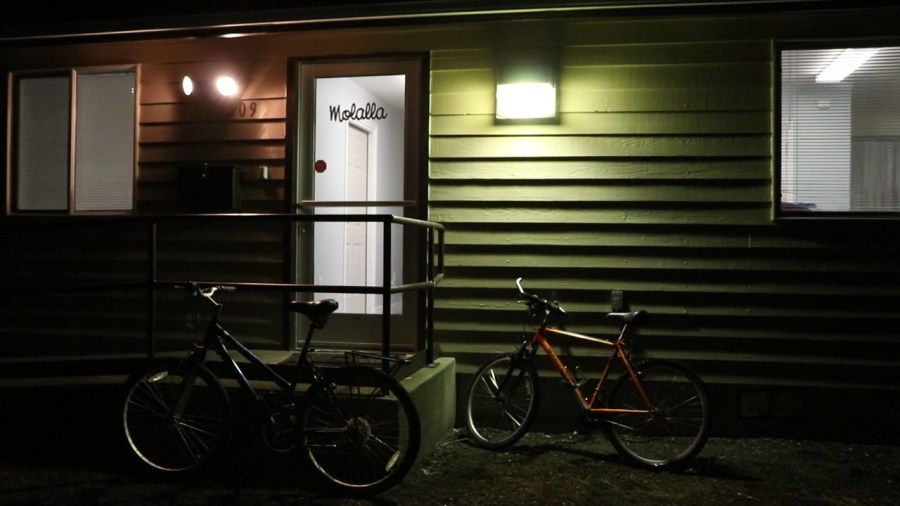MOLALLA, Ore. (KOIN) — Kimberly Morales volunteers at the Molalla Warming Center, but less than a year ago, she was seeking shelter there.
“On January 1, I found myself homeless and kind of scared to death,” Morales said. A while back, she said she suffered some injuries and ended up with nerve damage that made her unable to work. Family and friends took her in, but after a while Morales said it “gets to the point where people can’t keep helping you.”
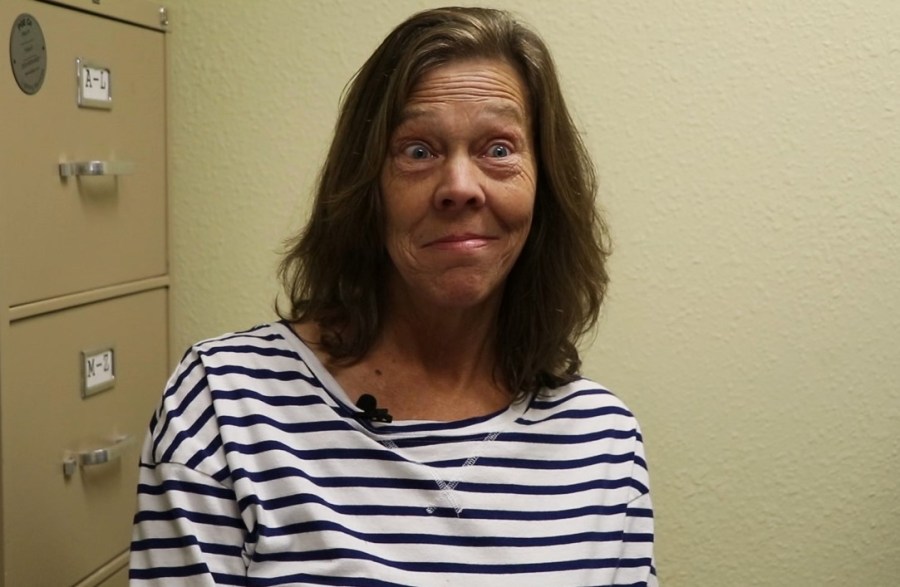
So on that cold night, she was waiting outside the shelter in her car, crying and scared to go inside. Then some volunteers came out and talked with her. “It made me feel so welcome,” she said.
A short time later, she decided to give back, and started volunteering at the center. In April, she got into housing, but has continued volunteering.
“I want these people to have a warm place to stay,” Morales said. “And without volunteers, they don’t have a place to stay.”
An estimated 14,476 people were homeless in 2018 in Oregon, according to the U.S. Department of Housing and Urban Development. That is the largest number since 2015, when nearly 16,000 people were estimated to be experiencing homelessness.
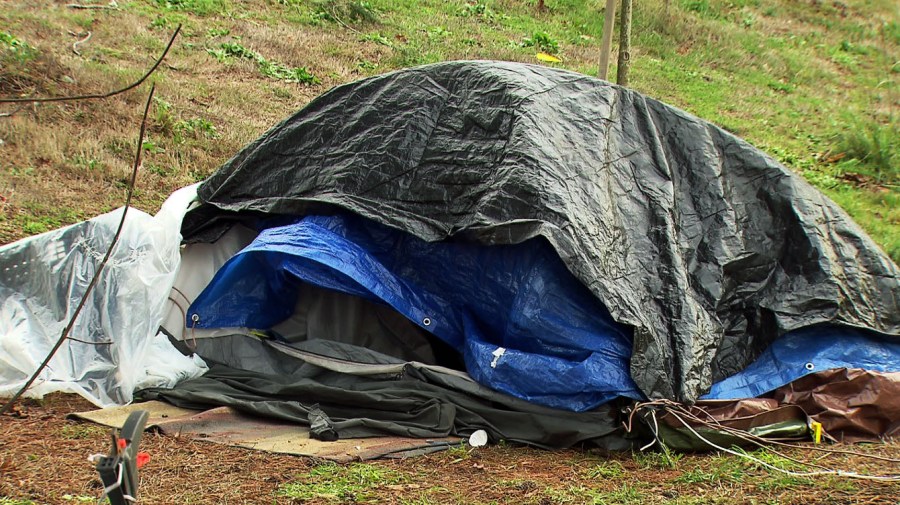
Rural areas are not immune, though they do have unique problems.
“It kind of surprises us sometimes that we grow that much here in Molalla because we don’t have services like the bigger cities do,” Molalla Warming Center director Leota Childress said. “But we have a lot of area around where homeless people can find, either legally or illegally, to camp out.”
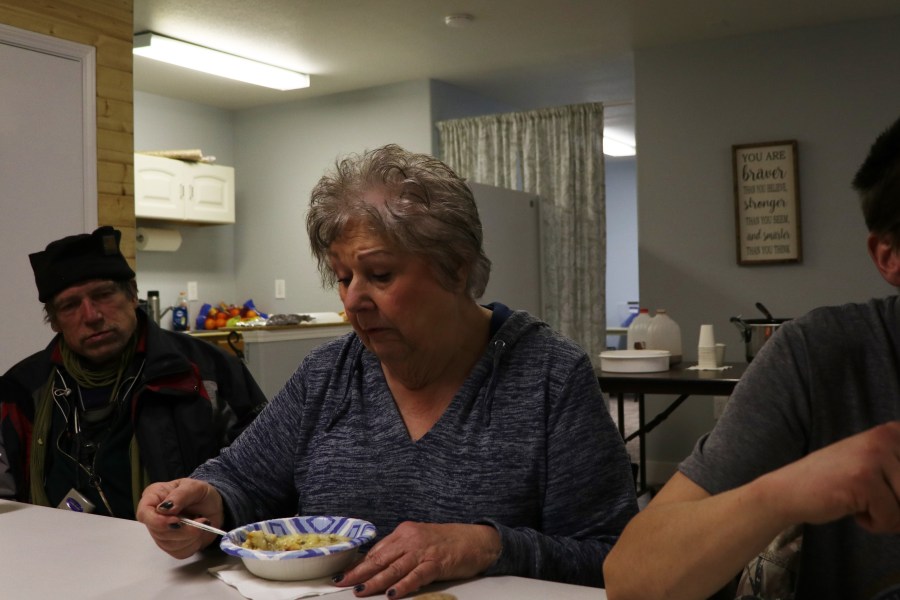
That’s why Childress and some church friends banded together to start the shelter. It has been open for seven years now, and gets grant funding from the county. They open when the temperature is forecast to be 33 degrees or colder (including wind chill) and can shelter up to 32 people in the small building on Kennel Avenue, though they usually don’t get nearly that many.
On average, Childress said they have been open around 52 nights throughout the winter. Last year, that number jumped to 87 nights. The center also opened during the day nine times, she said.
“Last year was the first time we had opened during the day at all, but the weather was just brutal,” she said. The number of people seeking shelter also increased during the cold snap. Though it’s still early in the year, Childress says this winter is seeing similar numbers, made up of regulars and newcomers alike.
Anthony, who is from Molalla originally, said he has been coming to the center for three years.
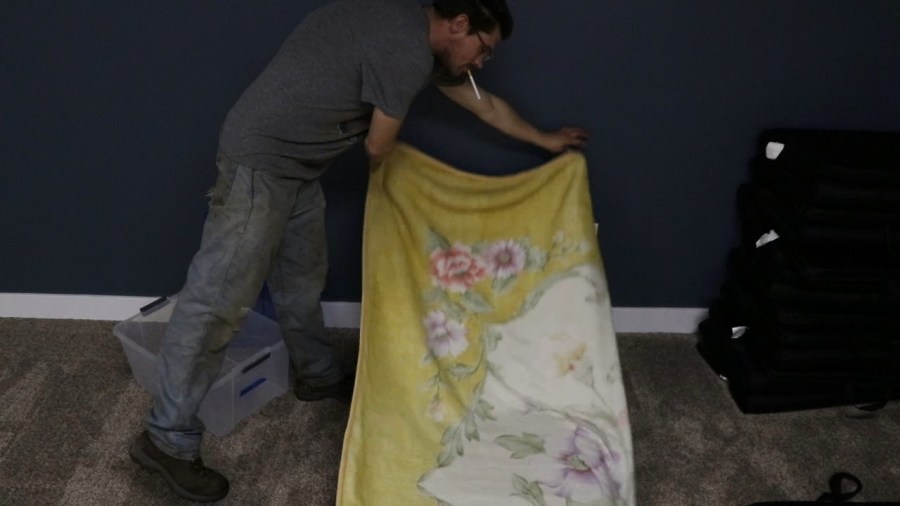
“Otherwise, you literally cannot find a place in this town, the city ordinances in this town have made it so that if you get caught sleeping, whether it’s a park business or just anywhere, you will get a $360 fine,” Anthony said.
Shawn arrived in Oregon on a Greyhound bus from Las Vegas in early November, looking for a change of scenery and hoping to find his family.
“It’s gotten really cold and you don’t get that in Vegas,” he said. He appreciates the warming center and the volunteers, even leading an impromptu blessing before everyone sat down to eat Childress’s homemade potato soup and scones Sunday night.
According to Clackamas County’s 2019 Point-In-Time (PIT) Count, Molalla had one of the largest homeless populations, despite being a town of under 10,000 people.
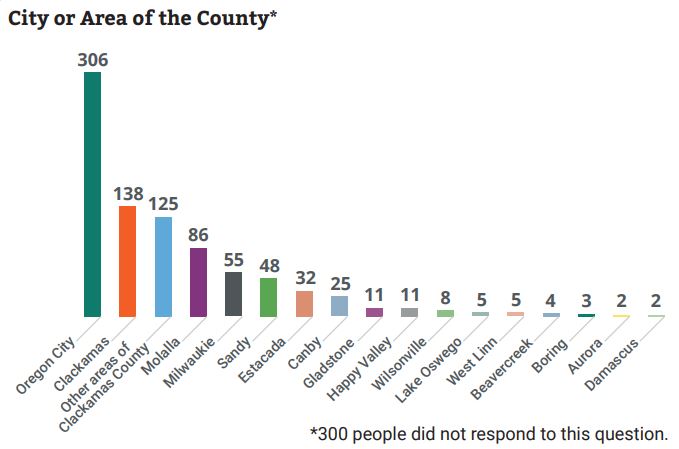
“I’m really saddened that there’s so much homelessness in my home town,” said Kim, who has only been coming to the warming center for about a week. She occasionally cleans houses, but has had difficulty getting around without a car.
“I’m embarrassed some days, but some days I’m just like, ‘Whatever. I’m doing what I can,'” she said. Though her adult children live in the area, she said she doesn’t want to be a “burden,” so she and her boyfriend and their chihuahua usually find remote areas to camp.
For Kim, respecting other people’s property and leaving their camping spot clean is key.

“(Other people) just leave crap everywhere and I’m like, ‘That’s not nice,'” she said. “It makes everybody think that everybody that’s homeless is a drug addict and they’re dirty.”
The PIT Count isn’t a perfect measure, since factors like volunteer availability and weather at the time of the count can impact the results. But the 2019 results showed that rent and lack of employment were the top reasons people said caused them to become homeless.
For Childress, that’s proof that most people could find themselves in a similar situation. She said it’s unfair that many view homeless people in a negative light.
“Homeless people are people, down on their luck, made bad choices in life, which we’ve all done,” she said. “We just haven’t ended up on the street as a result of it.”
The Molalla Warming Center is in desperate need of volunteers. For more information, visit the center’s Facebook page.
